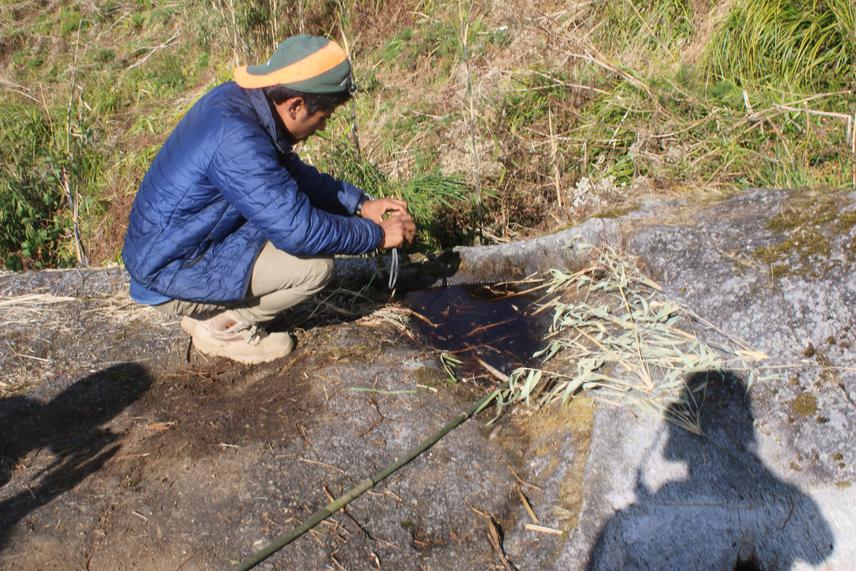Monsoon Pokharel Khatiwada
Snow leopards (SL) are threatened with extinction. An estimated population of 13-21 SLs remains in the Kangchenjunga Conservation Area (KCA) of eastern Nepal. This project aims to protect the last remaining population in the area addressing the human-SL conflict. Major outputs of this project include: a map identifying areas of Human-SL conflict, demography of herders/livestock and a mechanism for community engagement in SL conservation. Participatory approach will be adopted engaging local stakeholders to implement the project. This project will facilitate a comprehensive, effective SL conservation project in the area.

Wildlife killed area in Surumkhim.
In Nepal, Snow Leopards are known to occur in five habitat blocks from east to west. The national population is estimated at 301 – 400 individuals with total potential habitat of 12,815 sq. km. The KCA block population of Snow Leopard is 13 – 21 individuals (SLCAP, 2017). It is essential that this small population has safe access to corridors to allow genetic exchange with nearby populations in China and India.
The major threats of Snow Leopard include prey base depletion, illegal trade, conflict with local people, lack of conservation capacity, policy and awareness (IUCN, 2017). Primary threats within for Nepal include reduction of natural prey due to competition with livestock and poaching, killing of Snow Leopards in retribution for livestock depredation, lack of trans-boundary cooperation and human population growth or poverty.
Kangchenjunga – Singhalila Complex (KSC) encompasses an impressive mountain landscape and is recognized as a biodiversity hotspot. Despite continued conservation efforts, human-Snow Leopard conflict is a major threat to Snow Leopard populations in eastern Nepal. Local herders live traditional subsistence livelihoods in these high altitude areas, practicing rotational herding. Snow Leopards often prey opportunistically on livestock which ultimately results in retaliatory killings.
It is estimated that Snow Leopards also exist outside of protected areas (PAs) thus; landscape conservation involving local communities becomes an important strategy. Snow Leopard habitats in eastern landscape are fragmented, so maintaining a minimum viable population depends upon linkage with Chinese and Indian populations (SLCAP, 2017). The proposed site is a known corridor for Snow Leopard movement across Nepal and India. So, the area is significant in terms of habitat connectivity and provides a strategic location for Snow Leopard conservation intervention.
The overall aim of this project is to assess the human-Snow Leopard conflict in the corridor landscape and to implement Snow Leopard conservation outreach programs engaging local communities.
A social survey, a bio-physical survey and educational activities will be carried out to accomplish the project objectives effectively. A pro-forma will be prepared to collect demographic details of herders and their livestock. A semi structure questionnaire will be prepared for use in interviews to collect data regarding livestock depredation and killing of Snow Leopard.